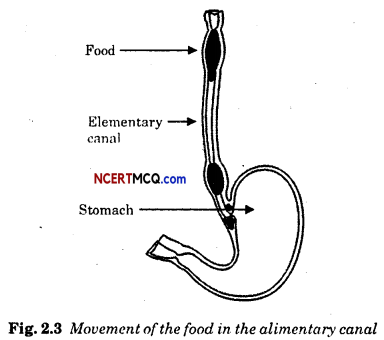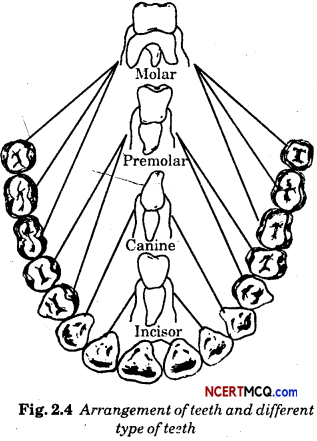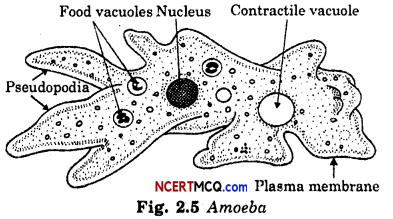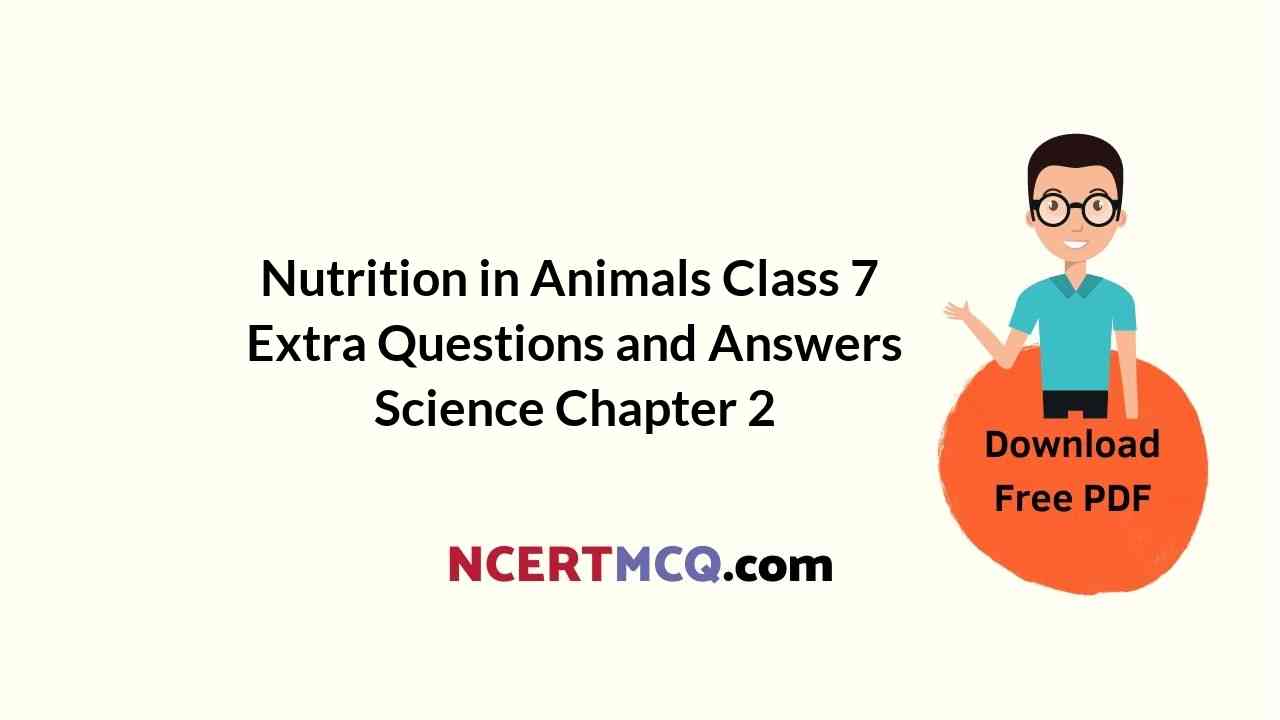Check the below NCERT MCQ Questions for Nutrition in Animals Class 7 Extra Questions and Answers Science Chapter 2 Pdf free download. https://ncertmcq.com/extra-questions-for-class-7-science/
Class 7 Science Chapter 2 Extra Questions and Answers Nutrition in Animals
Nutrition In Animals Class 7 Extra Questions And Answers Question 1.
What does animal nutrition include?
Answer:
Animal nutrition includes nutrient requirement, mode of intake of food and its utilisation in the body.
Nutrition In Animals Class 7 Extra Questions With Answers Question 2.
Name the largest gland of the human body.
Answer:
Liver.
Class 7 Science Chapter 2 Extra Questions Question 3.
What is digestive system?
Answer:
The digestive tract and the associated glands together constitute the digestive system.
Nutrition In Animals Class 7 Questions And Answers Question 4.
Name the four types of teeth.
Answer:
Incisor, canine, premolar and molar.
![]()
Nutrition In Animals Class 7 Notes Questions And Answers Question 5.
What is the function of saliva?
Answer:
It breaks down starch into simple sugar.
Ncert Solutions For Class 7 Science Chapter 2 Extra Questions Question 6.
What is cud?
Answer:
The partially digested food stored in rumen is called cud.
Class 7 Science Chapter 2 Extra Questions Answers Question 7.
Write the arrangement of teeth in mouth.
Answer:
The arrangement of teeth from left to right is as follows :
3 molars + 2 premolars + 1 canine
+ 4 incisors + 1 canines + 2 premolars + 3 molars.
Class 7 Science Chapter 2 Extra Question Answer Question 8.
What should one do to keep teeth healthy?
Answer:
- One should clean the teeth with a brush or dantun.
- One should use dental floss (a special strong thread which is moved between two teeth to take out trapped food particles) at least twice a day.
- One should rinse the mouth properly after every meal.
- Also, one should not put dirty fingers or any unwashed object into the mouth.
Nutrition In Animals Extra Questions Question 9.
Draw a diagram to show movement of food in the oesophagus of alimentary canal.
Answer:

Class 7 Science Ch 2 Extra Questions Question 10.
What is stomach?
Answer:
The stomach is a thick-walled bag. Its shape is like a flattened U and it is the widest part of the alimentary canal.
Ncert Class 7 Science Chapter 2 Extra Questions Question 11.
What is amoeba?
Answer:
Amoeba is a microscopic single-celled organism usually found in pond water. Amoeba has a cell membrane, a rounded, dense nucleus and many small bubble-like vacuoles in its cytoplasm.
![]()
Nutrition In Animals Class 7 Worksheet With Answers Question 12.
What is alimentary canal?
Answer:
The complete track from mouth to anus through which food is taken, digested, absorbed and undigested food or waste passes out is called alimentary canal.
Class 7 Nutrition In Animals Extra Questions Question 13.
Name all the parts of alimentary canal.
Answer:
- The buccal cavity,
- oesophagus,
- stomach,
- small intestine,
- large intestine and
- the anus.
Extra Questions On Nutrition In Animals Class 7 Question 14.
Draw a diagram of arrangement of teeth in mouth.
Answer:

Extra Questions For Class 7 Science Nutrition In Animals Question 15.
What is tooth decay?
Answer:
If we do not clean our teeth and mouth after eating, many harmful bacteria also begin to live and grow in it. These bacteria break down the sugars present in the leftover food and release acids. The acids gradually damage the teeth. This is called tooth decay.
Question 16.
Draw a figure of amoeba and show its various parts.
Answer:

Question 17.
Write the functions of stomach.
Answer:
It receives food from the food pipe or oesophagus at one end and opens into the small intestine at the other.
The inner lining of the stomach secretes mucous, hydrochloric acid and digestive juices. The mucous protects the lining of the stomach. The acid kills many bacteria that enter along with the food and
makes the medium in the stomach acidic. The digestive juices break down the proteins into simpler substances called amino acids.
Question 18.
Write briefly about the large intestine.
Answer:
The large intestine is wider and shorter than small intestine. It is about 1.5 metres in length. Its function is to absorb water and some salts from the undigested food material. The remaining waste passes into the rectum and remains there as semi-solid faeces. The faecal matter is removed through the anus from time to time. This is called egestion.
![]()
Question 19.
How does nutrition occurs in amoeba?
Answer:
Amoeba feeds on some microscopic organisms. When it senses food, it pushes out pseudopodia around the food particle and engulfs it. The food becomes trapped in a food vacuole. Digestive juices are secreted into the food vacuole. They act on the food and break it down into simpler substances. Gradually the digested food is absorbed. The absorbed substances are used for growth, maintenance and multiplication. The undigested residue of the food is expelled outside by the vacuole.
Question 20.
Can you guess what the role of villi could be in the intestine?
Answer:
The villi increase the surface area for absorption of the digested food. Each villus has a network of thin and small blood vessels close to its surface. The surface of the villi absorbs the digested food materials.
Question 21.
Paheli wants to know why these animals (ruminants) cannot chew food properly at the time they take it in?
Answer:
The ruminants mainly feed on rass and bush which primarily contain cellulose or roughage. For the breakdown of cellulose a lot of chewing and saliva are needed. So, the ruminants need to chew the grass for long time. That is why, they chew it twice. If they chew for long while eating, they will get less time to eat and they will remain hungry.
Question 23.
Boojho wants to know why we cannot digest cellulose like the cattle do?
Answer:
Ruminants have a large sac-like structure called Caecum which is present in between the small intestine and large intestine.
The cellulose of the food is digested here by the action of certain bacteria which are not present in humans.
Question 24.
What are villi? What is their location and function?
Answer:
The inner walls of the small intestine have thousands of finger-like outgrowths. These are called villi. Villi are found in the small intestine. The villi increase the surface area for absorption of the digested food. Each villus has a network of thin
and small blood vessels close to its surface. The surface of the villi absorbs the digested food materials.
Question 25.
Name the type of carbohydrate that can be digested by ruminants but not by humans. Give the reason also.
Answer:
Cellulose is a type of carbohydrate that can be digested by ruminants but not by humans. Ruminants have a large sac-like structure called Caecum which is present in between the small intestine and large intestine. The cellulose is digested here by the action of certain bacteria which are not present in humans.
Question 26.
Why do we get instant energy from glucose?
Answer:
Glucose is the simplest form of carbohydrate which can be broken down easily to produce energy in our body. So, we get
instant energy from glucose.
Question 27.
Can we survive only on raw, leafy vegetables/grass ? Discuss.
Answer:
No. Because to live a healthy life we need a complete balance of all nutrients. Raw grcenveg(tables may have cellulose which can not be digested by us. So, only green lead vegetables will not solve the purpose. We must have to ingest food rich in proteins fat.,vitamins, minerals along with carbohydrates.
Multiple Choice Questions
1. What is the mode of feeding in snail?
(i) Capturing
(ii) Sucking
(iii) Scraping
(iv) Swallowing.
Answer:
(ii) Sucking.
2. Which of the following animals’ shows ‘scraping5 mode of feeding?
(i) Snail
(ii) Mosquito
(iii) Lice
(iv) Ant.
Answer:
(iv) Ant.
3. Butterfly feeds on :
(i) sugar
(ii) small insects
(iii) nectar
(iv) blood
Answer:
(iii) nectar.
![]()
4. How many teeth are found in an adult human being?
(i) 20
(ii) 24
(iii) 28
(iv) 32
Answer:
(iv) 32.
5. Which teeth is used for piercing and tearing?
(i) Incisor
(ii) Canine
(iii) Premolar
(iv) Molar.
Answer:
(ii) Canine.
6. Incisors are :
(i) cutting and biting teeth.
(ii) piercing and tearing teeth.
(iii) chewing and grinding teeth.
(iv) cutting and grinding teeth.
Answer:
(i) cutting and biting teeth.
7. How many chewing and grinding teeth are found in an adult human being?
(i) 4
(ii) 8
(iii) 12
(iv) 20.
Answer:
(iv) 20.
8. The total number of teeth in upper jaw is :
(i) same as of lower jaw.
(ii) two more than that of lower jaw.
(iii) two less than that of lower jaw.
(iv) four more than that of lower jaw.
Answer:
(i) same as of lower jaw.
![]()
9. What happens when iodine comes in contact with starch?
(i) Iodine turns red.
(ii) Iodine turns blue-black.
(iii) Starch turns red.
(iv) Starch turns blue-black.
Answer:
(ii) Iodine turns blue-black.
10. What is the action of saliva on starch?
(i) It breaks starch into protein.
(ii) It breaks starch into fat.
(iii) It breaks starch into sugar.
(iv) No reaction occurs.
Answer:
(iii) It breaks starch into sugar.
11. Which area of the tongue tastes sweetness?
(i) Left side
(ii) Right side
(iii) Middle part
(iv) Tip.
Answer:
(iv) Tip.
12. The left side of the tongue tastes :
(i) bitterness
(ii) sourness
(iii) sweetness
(iv) saltiness.
Answer:
(ii) sourness.
13. The structures that are found on the tongue and responsible for various tastes are called as :
(i) taste pores
(ii) taste glands
(iii) taste buds
(iv) taste organs
Answer:
(iii) taste buds.
Keywords:
→ Absorption: Process of taking in digested food by the walls of intestine is known as absorption.
→ Amino acid: A constituent of protein.
→ Amoeba: It is a microscopic unicellular organism usually found in pond water.
→ Assimilation: The absorbed digested food materials are transported via the blood vessels in different organs of the body where they are used to build complex substances such as the proteins required by the body. This is called assimilation.
→ Bile: It is a digestive juice secreted by liver that helps in digestion of fats.
→ Buccal cavity: The mouth with all its internal parts like teeth, tongue, salivary glands, etc. is called buccal cavity.
→ Canine: The teeth used for piercing and tearing.
→ Cellulose: A type of carbohydrate found mainly in grasses.
→ Digestion: The breakdown of complex components of food into simpler substances is called digestion.
→ Egestion: The removal of faecal matter through the anus from time to time is called egestion.
→ Fatty acid: It is a simple form of fat formed after the digestion of fats.
→ Food vacuole: The part of amoeba where food is trapped and digested is called food vacuole.
→ Gall bladder: A sac like structure attached to the liver that stores bile juice temporarily is called gall bladder.
→ Glycerol: A digested outcome of fats.
→ Incisor: The front four teeth, two in each jaw in the mouth used for cutting food.
→ Ingestion: The process of taking food into the body is called ingestion.
→ Liver: It is the largest gland in the body that secretes digestive juices.
→ Milk teeth: The first set of teeth grows during infancy and they fall off at the age between six to eight years. These are termed as milk teeth.
→ Molar: Teeth for chewing and grinding present at the end of jaw.
→ Permanent teeth: The second set of teeth developed after falling of milk teeth are called permanent teeth.
→ Oesophagus: It is the food pipe that runs along the neck and the chest and connects mouth with stomach.
→ Pancreas: The pancreas is a lar’e cream coloured gland located just below the stomach which secretes digestive juices.
→ Premolar: The teeth used for chewing and grinding present just before nioIat teeth.
→ Pseudopodia: The flnger-like injections of amoeba that help it in movement and capturing fooð&re called pseudopodia.
